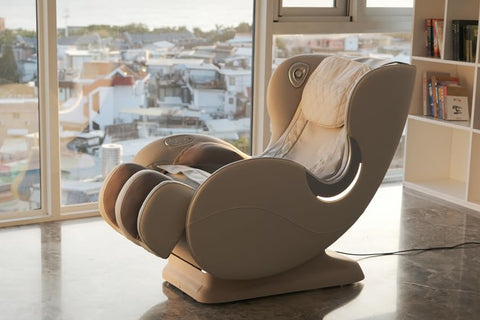How Do Massage Chairs Work?
Massage chairs are sophisticated pieces of furniture that have been engineered to provide various types of massages and relaxation techniques. These chairs use a combination of motors, gears, rollers, and airbags to simulate the hands and techniques of a professional masseuse. The technology behind massage chairs has evolved significantly, allowing them to offer a wide range of benefits, including stress relief, muscle relaxation, and improved circulation. Here's a detailed look at how massage chairs work:
The Basic Components
1. Motors and Mechanisms
The core of a massage chair's functionality lies in its motors and mechanisms. These motors power the rollers and nodes that move in patterns determined by the chair's settings. They can move in various directions to mimic different massage techniques, such as kneading, tapping, rolling, and shiatsu.
2. Rollers and Nodes
Rollers and nodes are designed to mimic the hands and fingers of a masseuse. They move along the back, providing relief to the spinal area. Their movements can be adjusted in speed and intensity to suit the user's preference. Some massage chairs offer 3D rollers that move not only vertically and horizontally but also in and out, to better simulate a deep-tissue massage.
3. Airbags
Airbags are strategically placed in various parts of the chair, such as the seat, back, sides, arms, and legs. They inflate and deflate to create a compression effect on the body, which is particularly beneficial for improving circulation and relieating muscle tension.
4. Track Systems
Most massage chairs use a track system that guides the rollers along the back. There are two main types of track systems: S-Track and L-Track. The S-Track follows the natural curve of the spine, while the L-Track extends from the neck down to the hamstrings, offering a more extensive range of motion.

Advanced Features
1. Body Scanning Technology
Many modern massage chairs come equipped with body scanning technology. This feature allows the chair to detect the user's body shape and posture, enabling it to adjust the rollers and nodes to target specific areas more accurately. This ensures a more personalized massage experience.
2. Zero Gravity Positioning
Inspired by NASA technology, the zero gravity feature reclines the chair to a position where the user's legs are elevated above the heart. This position distributes body weight evenly, reducing pressure on the spine and enhancing the effectiveness of the massage.
3. Heat Therapy
Some massage chairs include heating elements that add a soothing warmth to the massage. Heat therapy can help to relax muscles, alleviate pain, and improve blood circulation, enhancing the overall massage experience.
4. Vibration
Vibration motors can be found in certain parts of the chair, such as the seat and leg area. These provide a gentle shaking that helps to stimulate circulation and relax the muscles further.
5. Control Panels and Customization
Massage chairs come with control panels or remote controls that allow users to customize their massage experience. Users can select the type of massage, intensity, speed, and duration. Some chairs also offer pre-set programs tailored for specific needs, such as relaxation, muscle relief, or improved sleep.
The Massage Techniques
Massage chairs are designed to simulate various massage techniques, each offering unique benefits:
- Kneading: Mimics the motion of hands moving circularly, which is effective for deep muscle relief and tension reduction.
- Tapping: Simulates a percussive, tapping motion, helping to invigorate and stimulate the area being massaged.
- Shiatsu: Applies pressure to specific points on the body, aiming to release tension and improve energy flow.
- Rolling: Moves up and down the back, mimicking the feel of hands pressing gently against the spine, which can help stretch the spine and relax the back muscles.
The Benefits
Massage chairs offer numerous health benefits, including stress reduction, improved circulation, relief from muscle tension and pain, better sleep quality, and enhanced overall well-being. They provide a convenient and accessible way to enjoy the therapeutic effects of massage from the comfort of home or even in your workplace.
Conclusion
Massage chairs are complex pieces of technology designed to replicate the techniques and benefits of traditional massage therapy. Through a combination of motors, rollers, airbags, and advanced features like body scanning and zero gravity positioning, they offer users a highly customizable and therapeutic experience. Whether you're looking to relieve stress, alleviate muscle soreness, or simply relax, a massage chair can provide significant health benefits, making it a worthwhile investment for your well-being.
